
Tapping the Gas Bank in the Barents Sea
continue the work to realise increased gas export capacity from this area of the ocean,” said Minister of Petroleum and Energy Terje Aasland when the study was presented.The Chicken and the EggMany are calling for assurances of larger gas volumes before initiating a process to lay new gas export pipelines. That means a need for more exploration and more discoveries. Some companies have stated ambitions in the Barents Sea and are planning a number of exploration wells in the years to come.If the infrastructure is developed in the form of, for example, pipelines for export or increased LNG capacity
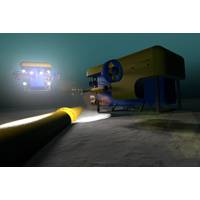
Major Gas Supplier Norway Closely Monitoring Baltic Sea Pipe Burst Probe
, with support from NATO allies, such as German and French frigates and British surveillance planes. The patrols continue. On land, the Home Guard was temporarily deployed to help Norwegian police patrol onshore oil and gas installations. In addition, energy major Equinor surveyed key gas export pipelines,such as the Europipe II link to Germany, on behalf of Gassco.It used specialized vessels equipped with remotely operated underwater vehicles that scanned the pipelines for anything out of the ordinary, like damages, foreign objects or ground disturbances.Equinor found nothing suspicious, its
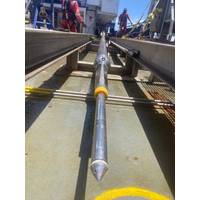
TDI-Brooks Completes Geotechnical Program in GOM
(CPT) with TDI-Brooks’ research vessel, the R/V Gyre. The project included the acquisition of 20-m Jumbo Piston coring, 40 meter CPT-Stinger samples and 40 meter Shelby-tube Stinger samples. Other piston, box core and gravity CPT (gCPT) samples were acquired associated with oil and gas export pipelines.The Shenandoah field development project is located in the Walker Ridge (WR) area in water depths ranging from 5,800 to 6,300 feet. The Shenandoah field will be developed as a subsea tieback from a drill center in WR-51 to a new build Floating Production System (FPS) located in WR-52.TDI-Brooks
FUGRO Wins Blue Stream Pipeline Inspection Contract
awarded a contract by Blue Stream Pipeline Company B.V. for the provision of survey support vessels and associated survey services to perform the 2015 external pipeline inspection for the offshore, shore approach, and dry section components of the Blue Stream Pipeline System. The two 24” gas export pipelines, E1 and W2, run from the Beregovaya gas compression station in Russia’s Arkhipo-Osipovka, 235 miles (378km) across the Black Sea, with a maximum water depth of approximately 2,150m, to the Durusu inlet terminal 40 miles (64km) from Samsun in Turkey. The in-field work in both areas
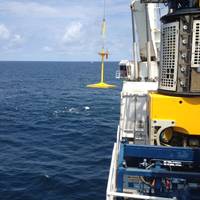
Subsea Network Helps Total Save Time at Egina
water depths of up to 1,750 meters, the Egina field covers an area of around 500 square miles. Infrastructure will include an FPSO, an oil offloading terminal and subsea production systems that will included 52 kilometers of oil and water injection flowlines, 12 flexible jumpers, 20 kilometers of gas export pipelines, 80 kilometers of umbilicals, and subsea manifolds. Production at the field is expected to reach 200,000 barrels per day at its peak. Fusion 6G is Sonardyne’s sixth generation of Long BaseLine (LBL) acoustic positioning system, and is a tool for subsea construction and survey
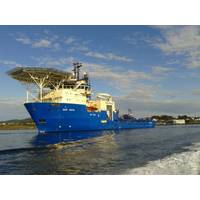
DeepOcean Working with New Teledyne TSS Cable Trackers
grapnel run, post-trench survey and trenching of over 560km of HVDC cable in water depths up to 165m. Because the TSS systems also include a pipe tracking capability the company is able to use them when servicing a new two year contract with Nord Stream AG for the inspection of the Nord Stream gas export pipelines in the Baltic Sea. This contract includes the full external inspection of the two pipelines by its vessel Deep Vision using ROV and ROTV methodologies and the TSS tracking systems. Since the launch of the TSS 440 in 2003, significant numbers of this system and of the TSS 350 have
TDW Replaces Valves, Repairs Lines Offshore Malaysia
, the operator moved to replace them safely and quickly. To ensure that gas would flow with minimal disruption while essential repairs were made, the operator retained global pipeline service provider T.D. Williamson (TDW). The repair program required replacement of two shutdown valves on two gas export pipelines attached to the drilling/riser platform, located approximately 135km northeast of Kertih. In addition, replacement of launcher valves and a piping section of the 52-slot drilling/riser platform located offshore Terrangganu, Malaysia was also necessary. TDW used its remote-controlled SmartPlug
Saipem: A Fleet Grows in Brazil
to Cabiúnas trunkline to the coast of Rio de Janeiro, in depths of up to 2,230 meters (7.316 ft.). It will be the first major trunkline connecting Brazil’s offshore pre-salt plays to the coast. The Saipem FDS 2 vessel already has an EPIC contract for the Guara & Lula-Northeast gas export pipelines in the Santos Basin approximately 260 km (161 miles) off the coast of the Rio de Janeiro, in water depths between 2,100 - 2,200 m (6,889 - 7,217 ft). The contract encompasses the transportation, installation and pre-commissioning of two export pipelines, as well as the engineering, procurement
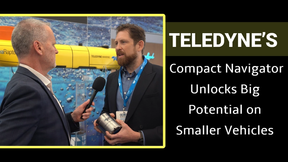
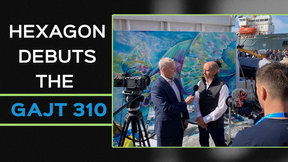
 February 2025
February 2025





